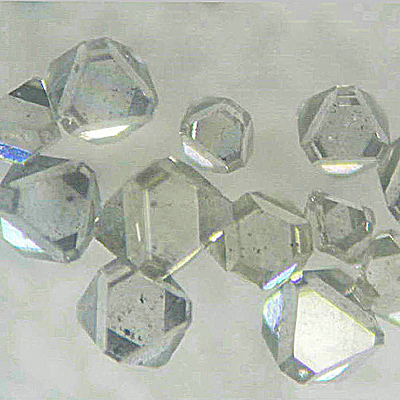
An advancement in diamond manufacturing technology could reportedly make it more difficult to differentiate natural rough stones from those produced in a laboratory.

An advancement in diamond manufacturing technology could reportedly make it more difficult to differentiate natural rough stones from those produced in a laboratory. International grading laboratory HRD Antwerp recently issued an industry statement advising it had encountered synthetic rough diamonds that mimicked the shape of natural rough diamonds.
The laboratory noted it had previously been "fairly straightforward" to distinguish between the two diamond types due to the fact that stones produced synthetically through the HPHT (high pressure, high temperature) and CVD (Chemical Vapor Deposition) techniques typically exhibited a "cubo-octahedral" shape and a "plate structure" shape, respectively.
"This significantly differs from the morphology of natural diamonds," the statement read.
However, the laboratory recently received a near-colorless rough melee diamond submission produced by Chinese synthetic diamond manufacturer Taidiam that featured octahedral and "other 'natural' shapes". Taidiam uses both the HPHT and CVD techniques to produce lab-grown diamonds, and it was said that the recently submitted stones ranged in size from 0.01 carats to 0.04 carats.
Caution required
According to HRD Antwerp, the new technological development meant "some caution is required" when dealing with rough diamonds. The statement noted that it would also make it "more difficult for less experienced rough traders to make a visual, on-the-spot identification of lab-grown rough diamonds".
HRD Antwerp chief education officer Dr Katrien De Corte emphasized that these concerns only affected the rough diamond sector. "Once the diamonds are polished, dedicated equipment still provides a full proof solution for identifying lab-grown diamonds in our lab," she stated.
De Corte added that the seed crystal used to produce the diamond as well as other characteristics typical of synthetic stones could still be detected under microscopic examination.
"An infrared spectroscopy analyses by our research team has also demonstrated that all colorless diamonds included in the examination were found to be type IIa or type IIb," she said.
Jeweller contacted HRD Antwerp and Taidiam for further comment but neither organisation had responded by the time of publication.